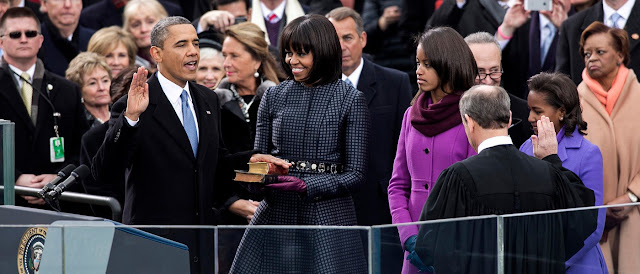How to Channel "The Great Gatsby"
Today's post was guest written by Imogen
‘Clothing maketh the man’ it is said, and fashion is a key element of F. Scott Fitzgerald’s famous novel.
The remade version of the classic movie The Great Gatsby will hit
theatres everywhere at the end of the year. In anticipation of the
stylish outfits worn by the likes of Leonardo DiCaprio and Tobey
Maguire, below is a users’ guide to dapper suits and sharp creases for
any man who want to emulate the 1920s style.
The ‘roaring’ 1920s
The
1920s has been described as a decade of ‘carefree fun and luxurious
elegance’; precisely what we need now in the face of recession,
inflation and unemployment all around. The decade has also been credited
with the start of ‘fashion trends’ as we know them.
The
1920s was also the decade when whitening toothpaste first became
fashionable. One of the most famous actors and fashion trend-setters of
the 1920s was Douglas Fairbanks, ‘The King of Hollywood’, and the very
first Oscar’s Awards host. He famously played Zorro; his sparkling smile
on the movie poster showed he certainly had no need for Dental cover, but could draw many an admiring glance from all his female fans.
This
was also the era of sumptuous Art Deco architecture and furniture
features smart and elegant clothing styles. In short, the 1920s style
possesses timeless qualities for any man who wants to dress with a bit
of style, panache and sophistication!
Everyone wore suits!
The
1920s staple outfit for any man, regardless of occupation, time of day
or event; was a suit. The hues were mainly neutrals, such as browns,
blues, grays and greens, and these were livened up by pops of color in
the added accessories. The fabric pattern was often a solid tone, checks
or stripes.
The distinguishable 1920s jacket
The
suit jackets were mostly made from wool, with trousers of wool-based
flannel. These were heavier than today’s suit materials but lighter than
in the previous century. Whether single or double breasted jackets,
what set the 1920s style apart was the way the top button came up to the
centre of the heart – giving very high lapels. Another key trend of
this era’s jackets was a double set of flap pockets.
High waisted and short: the pants
The
pants of a proper 1920s suit are key and of a distinguishable style.
The width of the pants legs changed halfway into the decade; fairly
narrow at the first half and wide by the second half (‘Oxford Bags’).
Regardless, what was key was for the suit pants to always match the suit
jacket and never – never – leave the area between your waistcoat and
pants exposed!
Though
the pants were shorter than today’s style – only down to mid ankle, the
waist usually sat up there past your bellybutton. And to ensure the
pants remained in place, fastened with a leather belt or buttoned
suspenders.
At
the front, pants typically featured two single pleats at the top and a
sharp crease along the leg. Pockets had side slits and there was a welt
at the back with one button. This was also the decade for adding a nifty
fold up cuff at the bottom of the pant legs.
Never fully dressed without a vest!
The
essential 1920s suit style meant three elements as opposed to today’s
two. For the smart dresser, the vest matched the rest of the suit,
whilst a more relaxed alternative was a knitted version in a
contrasting colour. Both versions, however, had a high V-neck and was
key in making a man feel properly dressed.
The collarless trend launched by Gatsby himself
Rather
like today’s options, the shirt collar was either pointed and free, or
pointed and buttoned-down. Some shirts would have a detachable white
collar, and this is for many, the ultimate 1920s shirt style. The Great
Gatsby himself actually started a new trend by being the first to don a
never-before seen collarless shirt. This is another 1920s statement
shirt.
And,
if the suit itself was fairly neutral and conservative in its color
choices, the shirt was anything but! The shirt pattern was often
vertical stripes in myriad colors such as yellow, pink, purple, blue and
green, though solid colors were also part of the choices.
The
shirt cuffs were most often French or button varieties, made to be worn
with some nice cuff links, especially by the more affluent wearers who
often would sport some expensive blinged-up versions!
The individuality and fun in neckwear
The
1920s man also injected individuality and a sense of fun with his
neckwear. Men would either opt for a stripy or polka dotted bow tie;
stripy or plaid neckties; or opt for a neck scarf tie available to
complete any outfit.
Bowties
would not be the pre-tied versions of today; no, these were of the
self-tying variety and looked thick and puffy. The wide and fat neckties
would hang a few inches above the high-waisted pants, and often
featured three thick vertical/horizontal stripes, or with plaid, check
or with art deco patterns.
A
more casual style was the thin and patterned scarf tie made from
rectangular silk. The way to wear this was to wrap it around the neck,
tied in a knot and then wrap it back over the knot. This would be worn
with the top button of the shirt undone, or over a collarless shirt
tucked beneath a knitted vest.
Of course, no 1920s man worth his fashion stripes would feel complete without a fetching hat and pair of nifty shoes to complement his immaculate style.


Very informative post, Jovan. I think you have a talent for being a fashion historian.
ReplyDelete"Today's post was guest written by Imogen"
ReplyDeleteOK - I missed that. But a great post none the less.
ReplyDelete